by Christie Purifoy | Apr 16, 2015 | Gardening, Spring, Uncategorized
Lesson One:
The weeds come back first.
Don’t be discouraged. Start weeding. Keep waiting.
And, especially, keep your eyes open.
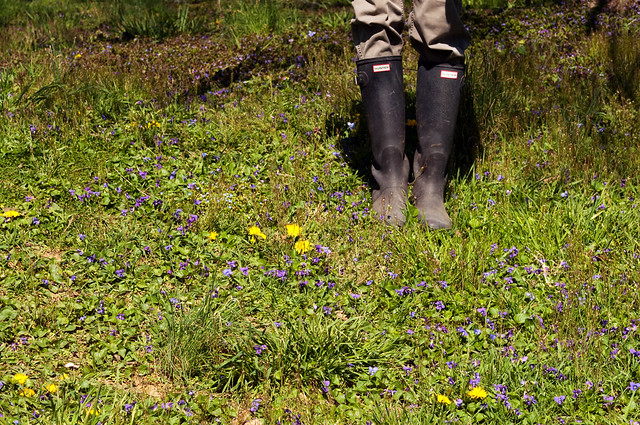
Lesson Two:
Even your least-favorite colors are beautiful after a long winter. Neon-yellow forsythia, I’m looking at you.

Lesson Three:
After a long winter spent with books, it takes time to reacquaint yourself with the world outside your door. Like the two-year-old, you may at first mistake a bumble bee for a “porcupine.”
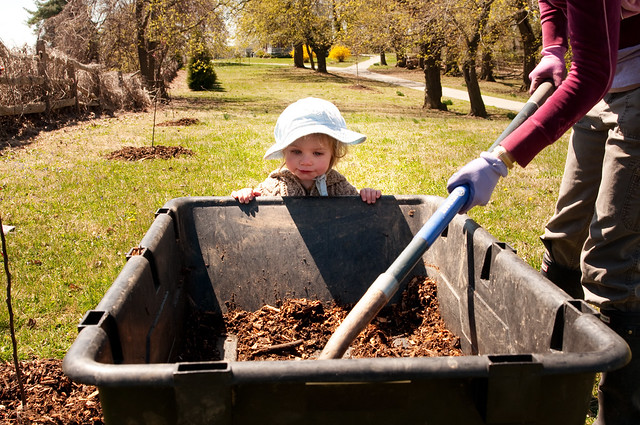
Lesson Four:
Don’t put off till tomorrow the cleanup you can do today. Especially because, tomorrow, all those brush piles will be edged with poison ivy.
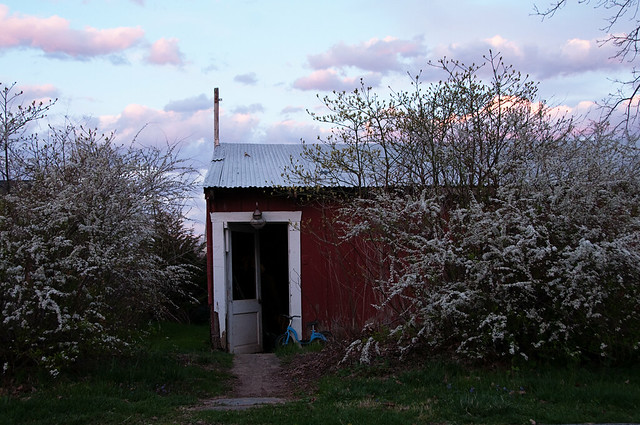
Lesson Five:
The garden asks you to do and be. It is important to cut back all the hydrangeas that bloom on new wood, but it is just as important to sit in a green patch memorizing the stripes on a purple crocus.
*
What’s growing in your bit of earth?
(P.S. These springtime photos were taken by my sister, Kelli Campbell, last year. If you’d like to keep up with the spring just beginning at Maplehurst, you can find my own images on Instagram.)
by Christie Purifoy | Apr 8, 2015 | Dreams, Joy, peace, Pennsylvania, Seasons, Spring, Uncategorized, Waiting, Writing
I grew up in Texas. In that place, it is possible to be surprised by spring. A river of bluebonnets might bubble up overnight. A heatwave might suddenly stake its claim on a handful of early February days.
Here, among rolling Pennsylvania hills, spring is never a surprise.
We wait so long for spring, and its coming is so slow, that no change appears without being watched from a great distance and for a long while. The view from my office window today is as brown and bleak as ever, but for days, weeks, even, I have watched the buds on the forsythia swell.
The snowdrops in the lawn do tend to pop up without warning, but no sooner have I noticed them than my two-year-old daughter has flattened the whole patch with one pink, rubber boot.
Observing a northern spring, I realize how small a great, new beginning can be. I dream of spring all winter, but the dream comes true only in fits and starts. In much waiting and a great deal of work with shovels, rakes, and pruners.
*
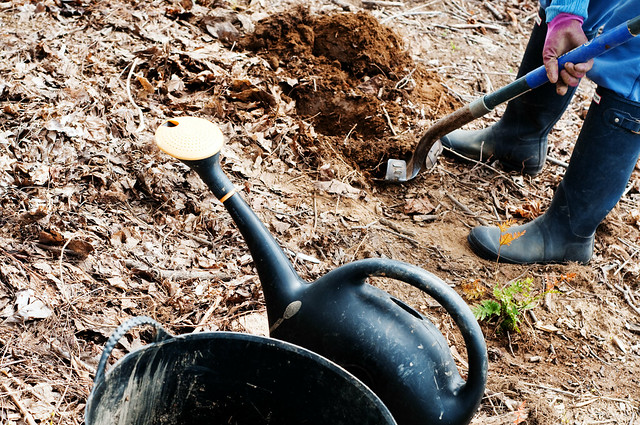
*
I once dreamed of becoming a mother, but the dream was realized in sleepless nights and temper tantrums (hers and mine).
I once dreamed of a farmhouse home, and the dream came true as we cleared hornet nests from behind every window shutter and poison ivy from every fence and tree.
I once dreamed of becoming a writer, and that dream came true through the slow, daily accumulation of words.
*
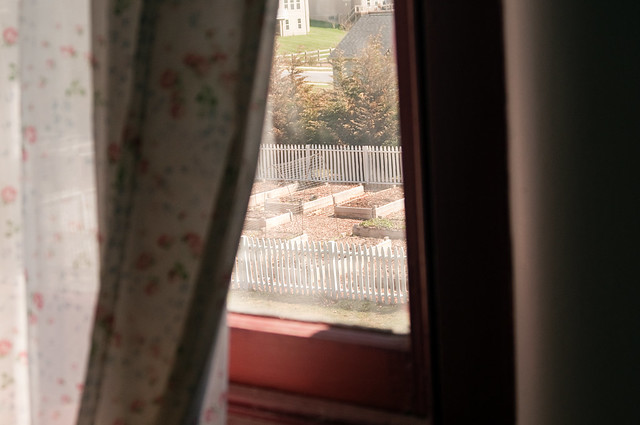
*
But dreams are like spring.
There will always be some moment of joyful recognition. Some moment when the dream drifts down around you. Light, like dandelion fluff, but real enough to see and touch.
Perhaps when the baby says I love you. When a friend says your home is so peaceful. Or, maybe, when you read the proposed back-cover copy for your book and burst into tears. Because, for the first time, the book with your name on it sounds, even to you, like a good book. Like the kind of book you would love.
It is like the moment when the magnolia opens its first pink blooms. It won’t matter then that I’ve been studying those gray buds all winter. It won’t matter that I noticed the first narrow edge of pink weeks ago.
I have lived enough springs to know that I will always greet that moment with astonishment.
*

by Christie Purifoy | Nov 13, 2014 | children, Family, God, grief, Jesus, motherhood, prayer, Seasons, Spring, Winter
I know that the killing freeze arrived later this year because I checked last year’s date in my journal. I understand that the cold air pouring in even as I type is, if anything, overdue, and yet I wish it had held off longer still.
Winter approaches, and I find myself afraid.
Most of the maple leaves have fallen, but the trees still wear a few. They look like dabs of watercolor paint. It is autumn’s last deep breath before the descent of winter’s gray veil.
Last winter was long, and the memory is still heavy. I love snow falling past the window, and I love pulling my children on a sled through the Christmas tree farm, but winter is not only that. Winter is also dark afternoons and ice in the chicken’s water and snow turned to mud.
*
We have all been sick for weeks, and I keep getting better only to get worse again. The baby’s eyes are red and infected, and our whole house shakes with bone-deep coughs.
I am too weary for bad news, I have kept the radio turned off, but terrible tidings slink in, like that draft around my office window. First there was a text from my friend. Such a devastating loss. A week later there was a phone call from family, and that one was so much worse.
They aren’t my stories to tell. Perhaps they aren’t stories at all. They are ruptures. Faultlines.
But you don’t need the details. I’m afraid you’ve heard them before. You, too, have received a text. You, too, have picked up that phone. These are the things that should never happen.
These are the stories every atheist mentions when he or she says they cannot, cannot believe in a good and loving and all-powerful God.
And I find I have no desire to argue with them. Such things should not happen. My atheist friends are absolutely right about that.
*
When the text came in, I started praying a prayer I’ve never prayed before. I think every true prayer is given, but the given-ness of this one was more apparent than most.
I prayed Let there be light.
I was still praying that prayer when the phone call came. And now I see no reason to stop. Lord, let there be some light. Dear God, please.
It is a winter prayer, and it beckons me toward spring promises:
For as the days of a tree, so will be the days of my people …
They will not labor in vain, nor will they bear children doomed to misfortune.
– Isaiah 65:22-23
I want to believe that these words are true, but I am thinking of two mothers. One labored in vain. One bore a child doomed to misfortune. At least, that is what appears to be so.
But what if death was no more the end than winter is the end? What if these words are yet true for these mothers and their children? All hope seems lost, but maybe that is a lie.
After the cross came an empty tomb in a springtime garden.
Winter is near. They say it will be long and cold. I know for certain that it will be dark. But I also know that on the other side of winter is spring.
On the other side of death is life.
*
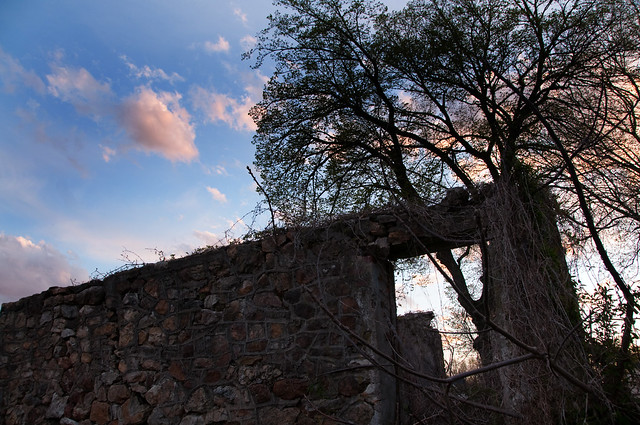
by Christie Purifoy | May 31, 2014 | Books, Gardening, prayer, Spring, Uncategorized
Let’s be honest. My springtime reading looks less like reading and more like one hour spent weeding the perfect reading spot under the sour cherry tree and then fifteen minutes given to sitting under that tree watching the peonies dance and catching my book as it just slips from my lap.
So, not a great deal of actual reading.
But books are food for me and even in springtime I manage to take a few bites here and there. Lately, these quick bites have been all about the letter P: pruning, poetry, and prayer.
(You can find more information about my occasional Saturday series of book recommendations here. These posts do include affiliate links. Thank you for clicking and buying. Thank you for reading along. And thank you for sharing your own recommendations in the comments!)
***
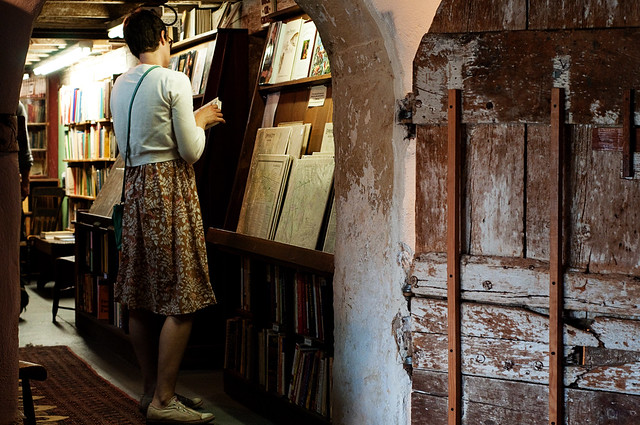
***
I learned about Lee Reich’s Pruning Book, The: Completely Revised and Updated by listening to a radio call-in gardening show. Since then I’ve seen his name everywhere (well, everywhere you might expect to find mention of a pruning expert). This is an award-winning, highly-praised reference book. It is also beautifully made, comprehensive, and a joy to browse. Best of all? It makes pruning seem easy.
by listening to a radio call-in gardening show. Since then I’ve seen his name everywhere (well, everywhere you might expect to find mention of a pruning expert). This is an award-winning, highly-praised reference book. It is also beautifully made, comprehensive, and a joy to browse. Best of all? It makes pruning seem easy.
If you’ve ever wondered what to do with that old apple tree (or the apple whip you recently planted), or how to keep your tomatoes from sprawling into a disease-ridden mess, or how to keep your clematis vine blooming then you really should own this book. I first checked out a copy from the library, but it only took me about five minutes of flipping pages to realize I needed this one on my shelf.
***
If anyone could turn pruning into poetry that someone would be Verlyn Klinkenborg. His eloquent observations of life on his New York farm are deservedly famous. The Rural Life is nature writing as poetry.
is nature writing as poetry.
You might think you don’t have much interest in nature or country living (and I should mention that just the words nature documentary put me straight to sleep), but if you appreciate language and metaphor, if you want to learn how to see to the depths of what is always right in front of our eyes, then you should be reading Klinkenborg.
I haven’t yet read his follow-up collection More Scenes from the Rural Life but simply holding the book makes me happy. Published by Princeton Architectural Press, the jacket design and interior illustrations are perfect. Beautifully old-fashioned but also minimalist and modern. Choose this gorgeous hardcover for yourself and as a gift. It’s that kind of book.
but simply holding the book makes me happy. Published by Princeton Architectural Press, the jacket design and interior illustrations are perfect. Beautifully old-fashioned but also minimalist and modern. Choose this gorgeous hardcover for yourself and as a gift. It’s that kind of book.
Everyone reaches for fullness in summer, but the fullness that most of us know best belongs to the memory of childhood. What was it that made summer days so long back then and made the future seem so distant? What was the thing we knew or didn’t know? – Verlyn Klinkenborg
***
Phyllis Tickle’s prayer books are year-round favorites of mine, but I love them especially during the busyness of spring and summer. I don’t pray the hours (morning, noon, and night) regularly, but when I only have a few minutes and don’t even know where to begin with prayer or Bible-reading I almost always find myself reading the morning office in Prayers for Springtime.
The Divine Hours (Volume Three): Prayers for Springtime: A Manual for Prayer (Tickle, Phyllis) and The Divine Hours (Volume One): Prayers for Summertime: A Manual for Prayer
and The Divine Hours (Volume One): Prayers for Summertime: A Manual for Prayer are part of a three-volume set. Whether or not you are familiar with the Benedictine practice of fixed-hour prayer, I think you will find Tickle’s contemporary selections of prayers, psalms, and Scriptures easy to use either regularly or (like me) irregularly as the need or mood strikes.
are part of a three-volume set. Whether or not you are familiar with the Benedictine practice of fixed-hour prayer, I think you will find Tickle’s contemporary selections of prayers, psalms, and Scriptures easy to use either regularly or (like me) irregularly as the need or mood strikes.
I sometimes think that fifteen minutes spent sitting under the sour cherry tree observing the birds and noticing the breeze is a form of prayer. Reading a bit from this book as I sit only makes it more official.
And you? Which books are you reading on the patio as the sun begins to set?

by Christie Purifoy | May 28, 2014 | Amish, Books, children, Family, motherhood, Pennsylvania, Seasons, Spring, Uncategorized
… for history is a pattern / Of timeless moments.
– T. S. Eliot, Four Quartets
The kids and I are reading the Little House books. One chapter each night. We began with Farmer Boy and a fire in the old stone hearth. Now we are in the big woods of Wisconsin, and there is birdsong through our open window.
It is also haying time in the fields west of this house. When we drive in that direction, to buy chicken feed from the feed and lumber store or flats of annuals from a greenhouse, we watch teams of muscled, shaggy horses at work in every field. They look as if they have been plowing the same red-clay soil for two hundred years. Day in, day out.
Sometimes there is a young boy holding the reins. He wears suspenders and a straw hat, and together we wriggle to keep from pointing and shout “Look! Farmer Boy!”
***
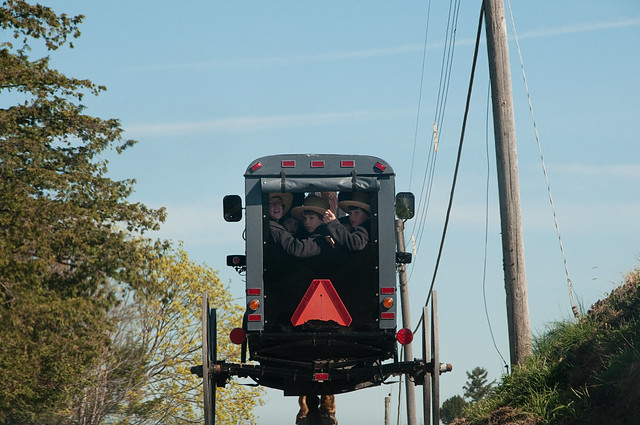
***
In this place, when the breeze carries the bracing smell of hay, just-cut, I am able to understand something about time that is normally hidden from me.
Time is not a line carrying us always farther from the past. Time is not a thread, and we are not simply biding it until the day ours is cut.
These days, in Lancaster County, I can see that time is a spring. Past and present and future bubble up together, and the sound is like music. Like the clip-clop of horses’ hooves. Like birdsong through an open window.
But my children appear to be lines racing, racing away from me. Willowy is the word that comes to mind when I observe my firstborn girl. For nearly two years, I’ve seen her baby face when I look at my youngest, my second girl, but that face is now lost. Elsa Spring has grown into herself. There is a family resemblance, yes, but more and more she looks only like Elsa. Something has been shed, and the lines of her eyes and chin are now hers alone. No longer her older sister’s.
And thus, two baby girls vanish from every place but memory.
***
I don’t really know if I am living in a country of lost things or a kingdom of restoration and everything made new. I look around, I read the news, and I find both. Hopelessly jumbled.
We lose babies and grandmothers. We lose marriages and homes. We lose our younger selves and friendships and health and peace between nations and on and on forever, it seems.
But every new season is also a return, and the month of May, this pivot between spring and summer, reminds me that it is possible to root myself in that bubbling spring. To live sure of what I cannot always see: that time is not linear but rhythmic. It is a song where every note returns and every note is new.
And this is the living water that sustains me. This is the living water I hold out. To my racing children. To my thirsty neighbor.
Maybe eternity begins when I read a favorite story for the third, fourth, fifth time.
Maybe eternity begins here. Now.
***
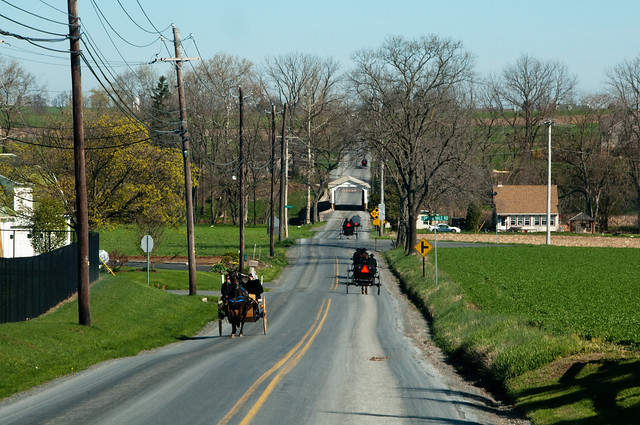
***
by Christie Purifoy | May 6, 2014 | Desire, Dreams, God, Spring, Uncategorized
“It is our desire, after all, that makes us most like God.”
(Fred Bahnson, Soil and Sacrament)
We are, all of us, so hungry.

My children dream of sugar, and I crave hot, buttery toast. I spied the first white flowers in the strawberry bed, and now all I can think about is warm, rich red.
We hunger for food and drink. Not once or twice but every day with regularity, like well-loved timepieces. Our hunger is new every morning.
We hunger for touch and for love and for happiness. We hunger for purpose and meaning and beauty.
But we are so terrified of our appetites. So afraid of our hunger. Desire is a dirty word.
Maybe we are terrified by thoughts of sin and shame and selfishness. Maybe we are haunted by a fear of scarcity. My hunger is too big. There can never be enough.
But the Bread of Life has appeared to us, and he has told us: Do not be afraid.
*
“This is the Lord’s doing, and it is marvelous in our eyes!” (Psalm 118:23)
*
Our constant hunger bears the image of an even greater hunger. A beautiful, generative, truly terrifying hunger. This is the hunger that gave birth to spring. To stars. To nations.
Within the small boundaries of my own backyard fence, this hunger birthed wild, waving forsythia and two spinning daughters. Unleashed, this hunger envisioned nodding daffodils and wild violets that pour themselves out like a river.
This hunger spoke a tree so shocking, so pink, it burns my eyes like a sun.
*
“This is the Lord’s doing, and it is marvelous in our eyes!” (Psalm 118:23)
*
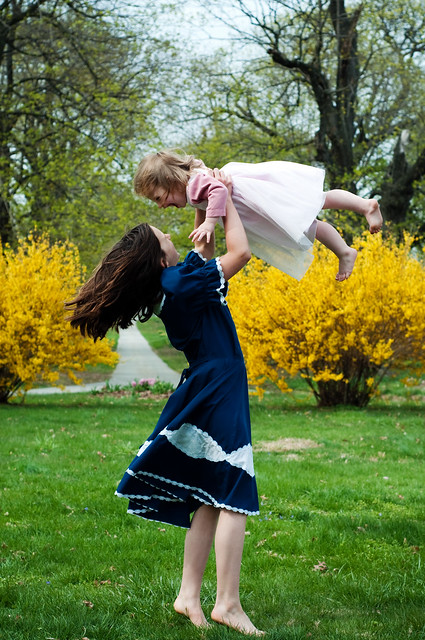
*
The sour cherry tree beyond my kitchen window is in bloom. The flowers are dainty. They are white ghosted with silvery green.
But the smell … it is nectar and roses and honey on the wind.
The air, like the breath of God himself, teases us. Tempts us. This is purposeful scent. This is devious scent. We can close our eyes and stop up our ears. We can harden our hearts with walls of fear, but the breeze slides past all of it.
And nectar and roses and honey say what are you hungry for?
What is your heart’s desire?
*

*














